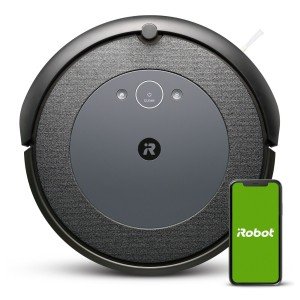The Evolution of Robot Hoovers: Revolutionizing Home Cleaning
Robot hoovers, likewise understood as robotic vacuum, have actually transformed how people approach home cleaning tasks. Initially introduced in the late 1990s, these self-governing devices have progressed rapidly due to improvements in technology, artificial intelligence, and artificial intelligence. Today, they are geared up with an array of functions that make them extremely reliable in maintaining cleanliness in living areas. smart vacuum out the history, operating, benefits, and future of robot hoovers.
The History of Robot Hoovers
The idea of robotic vacuums dates back to the 1970s, however it wasn't till the launch of the Roomba by iRobot in 2002 that they got mainstream attention. The Roomba was created to instantly navigate numerous surfaces, preventing obstacles while effectively cleaning floorings. Since then, numerous substantial advancements have actually happened, consisting of:
| Year | Advancement |
|---|---|
| 1996 | First model robotic vacuum established by a Japanese business. |
| 2002 | iRobot launches the Roomba, mass promoting robotic vacuums. |
| 2004 | Intro of the first Roomba with a dirt detection sensor. |
| 2011 | Launch of models with wireless abilities and smartphone integration. |
| 2020 | Advanced models including AI, boosted navigation systems, and mopping capabilities. |
How Robot Hoovers Work
Robot hoovers run on a mix of sensing units, video cameras, and algorithms that enable them to tidy efficiently. Key parts of these devices include:
Sensors:
- Obstacle Avoidance Sensors: Detect walls, furniture, and even stairs, preventing collisions and falls.
- Dirt Detection Sensors: Identify areas that require more comprehensive cleaning.
Navigation:
- Gyroscopes: Help determine the robot's orientation and motion.
- Electronic cameras and Lidar: Enable mapping of the home environment to create optimum cleaning paths.
Cleaning Mechanisms:
- Vacuum Motors: Generate suction to get dirt and particles.
- Brush Rollers: Agitate dirt out of carpets for deeper cleaning.
Power Supply:
- Batteries: Rechargeable lithium-ion batteries supply the needed power for prolonged cleaning cycles.
User Interface:
- Mobile Apps and Smart Home Integration: Users can arrange cleansings, display performance, and control the robot from another location.
Advantages of Robot Hoovers
Robot hoovers use many advantages, making them an enticing option for modern-day homes:
- Time-Saving: Automated cleaning enables users to concentrate on other tasks while the robot effectively cleans floors.
- Convenience: Many models can be scheduled for cleaning sessions, making sure that homes remain tidy without manual effort.
- Availability: Ideal for people with movement obstacles or busy lifestyles, allowing simpler home upkeep.
- Constant Cleaning: Regular, automated cleansings decrease the build-up of dirt and allergens, contributing to a much healthier living environment.
- Smart Technology: Integration with smart home systems permits for increased control and personalization.
Limitations of Robot Hoovers
Despite their benefits, robot hoovers come with particular constraints:
- Navigation Challenges: They may have a hard time in messy areas or with specific floor types such as high-pile carpets.
- Battery Life: Most designs need routine charging, which can limit cleaning duration.
- Upkeep: Regular cleaning of filters, brushes, and clearing dust bins is needed for ideal efficiency.
- Price: Advanced models can be costly compared to traditional vacuum cleaners.
The Future of Robot Hoovers
As technology continues to develop, the future of robot hoovers looks promising. Anticipated advancements include:
- Improved AI: Enhanced algorithms will permit much better item acknowledgment and dynamic mapping of spaces.
- Hybrid Models: Integration of vacuuming and mopping abilities in one gadget will supply a detailed cleaning service.
- Increased Autonomy: Future designs might navigate even the most complex environments without human intervention.
- Sustainability: Battery technology advancements will result in longer-lasting, more energy-efficient robots.
Often Asked Questions (FAQs)
1. Are robot smart vacuum for animal hair elimination?
Yes, numerous robot hoovers are specifically designed to tackle animal hair with effective suction and specialized brushes that decrease tangling.
2. How do top robot vacuum navigate around furniture?
Robot hoovers utilize a mix of sensors and electronic cameras to detect obstacles, allowing them to browse around furniture and avoid collisions.
3. Can robot hoovers tidy carpets?
Many modern robot hoovers are reliable on both difficult floorings and carpets. It is a good idea to inspect the requirements of individual models for particular efficiency.
4. Do robot hoovers need programming?
Numerous robot hoovers include easy to use apps that allow owners to set schedules and customize cleaning preferences, making programs uncomplicated.
5. How much do robot hoovers cost?
Rates for robot hoovers vary extensively, varying from ₤ 200 to around ₤ 1,500, depending upon features and brand name.
Robot hoovers have actually come a long method because their beginning, offering an effective and convenient cleaning service for modern-day families. Their increasing ability and intelligence make them a useful choice for individuals aiming to streamline their cleaning routines. As technology continues to advance, robot hoovers will likely become much more capable, offering extra features that cater to the developing requirements of users. Their journey from novelty to requirement underscores an essential shift in how society approaches home maintenance, marking a substantial turning point in the crossway of innovation and everyday life.

